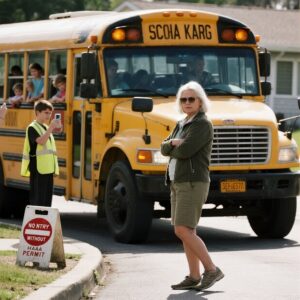The package arrived on a rainy Tuesday, unmarked and weathered, sitting on my doorstep like it had been waiting for me for years. Inside was a baby photo of someone with a birthmark identical to mine and an image of a crumbling house shrouded in trees. That was the day my quiet, predictable life unraveled.
When people ask where I’m from, I give a vague smile and say, “Here and there.” It’s easier than explaining the truth: foster homes, nights spent staring at unfamiliar ceilings, and a childhood defined by being passed from one place to another.
By the time I turned 18, I had learned not to expect much from the world. But there was one teacher, Mr. Peterson, who refused to let me fade into the background. He pushed me, believed in me, and encouraged me to apply for a college grant. Without him, I don’t know where I’d be.
College wasn’t easy. While others called home for money or advice, I juggled two jobs and survived on microwave dinners. After graduation, I landed a position as an assistant to a relentless businessman. He taught me everything: how to negotiate, how to read people, and how to work harder than anyone else in the room.
Five years later, I left to start my own logistics company. By the time I turned 34, I had built a life I was proud of—a life that felt worlds away from my beginnings. I thought I had finally moved on from the questions about my past.
But then the box arrived.
The cardboard was damp at the edges, its corners soft. There was no return address, no label, and no explanation. Inside, I found a collection of old toys: a wooden train missing its wheels, a stuffed bear with a button eye barely hanging on, and a pile of faded photographs.
The first photo I picked up stopped me cold. It was a baby, chubby-cheeked and smiling. My eyes went straight to the mark on his arm—a jagged birthmark identical to the one just below my elbow. My breath caught as I rolled up my sleeve and stared at my own arm, the realization sinking in like a punch to the gut.
The next photo showed a house, its weathered frame almost swallowed by towering trees. Scrawled at the bottom were the faint words “Willow Creek.”
At the bottom of the box was a letter written on rough, yellowed paper. The words were brief but haunting:
“This box was left with you at the orphanage when you were a baby. It was misplaced and only recently found. We are returning it to you now. It belongs to you.”
I stared at the letter, my heart racing. Questions buzzed in my mind like static: Who sent this? Why now? What did the house mean?
That night, I sat at my desk, staring at the photo of the house. I searched every corner of the internet for any trace of “Willow Creek” that matched the image. The search consumed me. Every dead end only fueled my obsession.
Weeks turned into months, and when online tools failed me, I hired investigators. They combed through records and traced old property registries. I told myself it was just curiosity, but deep down, I knew it was more than that. I needed to know where I came from.
Two years later, the call came. “We found it,” the investigator said. “The house in the photo. It’s in a small town about 150 miles away. Sending you the address now.”
The drive was long and silent. When I finally reached the house, it was like stepping into the photograph. The structure was worn and sagging, with vines creeping up its sides and trees towering over it like sentinels. The air was thick with the smell of damp earth and decaying wood.
I pushed open the creaking door and stepped inside. Dust floated in the shafts of light streaming through the broken windows. The floorboards groaned under my weight. And then I saw it—a cradle.
It was small and wooden, its edges worn smooth by time. The carved stars along its sides matched the ones in the photo. Next to it was a small table, and on it lay a faded photograph of a woman cradling a baby. Her tired but warm smile felt familiar, like an echo of something I’d long forgotten. My hands trembled as I picked up the photo.
Beneath it was a letter, folded neatly and yellowed with age. I unfolded it, my heart pounding.
“To my son,
I’m so sorry. I am very sick, and I have no one to care for you. I’m leaving you in the hope that you’ll find a better life than I could ever give you. I love you, my angel. Never forget that.”
The tears came before I could stop them. I sat on the floor, clutching the letter and staring at the photograph of the woman who had given me life but couldn’t stay.
Over the next few days, I couldn’t shake the feeling that I owed her more than just a visit. This house—her house—was a piece of her, and I couldn’t let it fade away. So I made a decision.
I hired a construction crew to restore the house. It wasn’t easy. The place was practically falling apart, and most people thought I was crazy for trying to save it. But I couldn’t let it go.
A year later, the house stood proud again. Fresh paint replaced peeling wood, new windows let light pour in, and the yard was cleared of overgrowth. Inside, I kept the cradle, polishing it until it gleamed, and placed the photograph of my mother and me on the mantel.
The house wasn’t just a building—it was my history. And for the first time, I felt like I had a place to call home.
What Can We Learn from This Story?
- The past shapes us, but it doesn’t define us. Evan’s journey shows how uncovering the truth about where we come from can help us understand who we are.
- Closure comes in many forms. By restoring the house, Evan found a way to honor his mother and the life she had wanted for him.
- Family isn’t just about where you come from, but how you carry those connections forward. Evan’s decision to preserve the house turned his history into a legacy.






